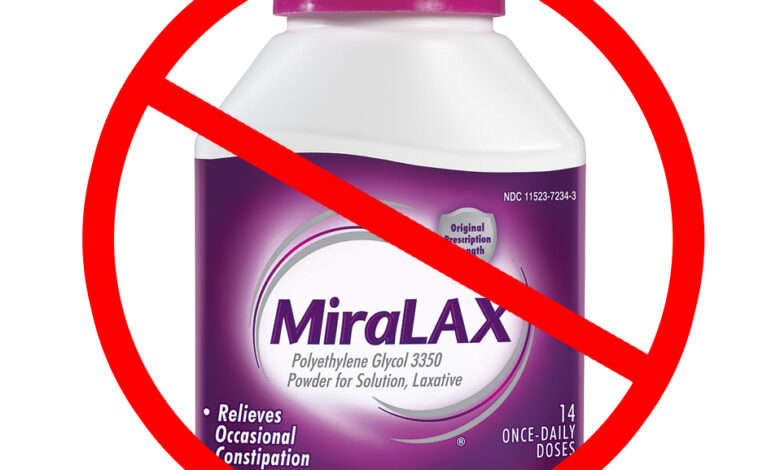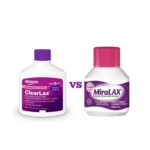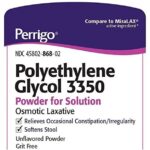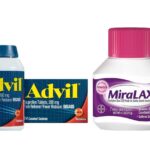What Are The Dangers of Using Miralax?

MiraLAX is a brand-name for polyethylene glycol, a laxative used to treat constipation and used for bowel preparation before colonoscopies and other procedures. It’s typically used for short-term treatment, but in some cases, it’s used long-term to treat chronic (long-lasting) constipation. MiraLAX is also sometimes used for colonoscopy bowel preparation.
For most people, taking MiraLAX will cause a bowel movement within one to three days of taking it. One study of its effectiveness focused on people who had fewer than two bowel movements per week. MiraLAX increased their number of bowel movements to 4.5 per week, compared to 2.7 per week in people taking a placebo.
Another study found that 52 percent of people with chronic constipation were successfully treated with MiraLAX.
MiraLAX comes as a flavorless powder that you mix with four to eight ounces of water, juice, or other liquid. The powder comes in bottles or single-serve packets.
How should this medicine be used?
Polyethylene glycol comes as a powder to be mixed with a liquid and taken by mouth. It is usually taken once a day as needed for up to 2 weeks. Follow the directions on your prescription label carefully, and ask your doctor or pharmacist to explain any part you do not understand. Take MiraLAX exactly as directed. MiraLAX may be habit-forming. Do not take a larger dose, take it more often, or take it for a longer period of time than your doctor tells you to.
Does miralax cause neurological problems?
According to drugs injury, thousands of parents whose children were prescribed MiraLax observed deeply troubling neuropsychiatric problems in their children after using MiraLax, these problems include:
- Depression
- Anger
- Anxiety
- Paranoia
- Mood swings
In fact, a “Citizen Petition to Investigate Polyethylene Glycol 3350 Product Safety for Use with Pediatric Patients” was filed back in 2012 urging the FDA to add a “black box” warning to its label pertaining to neuropsychiatric side effects in children. They also requested information concerning all clinical trials and studies done on polyethylene glycol (PEG) 3350, and demanded that the FDA conduct additional studies on its effects in children.
What other side effects can MiraLAX cause?
MiraLAX may cause side effects. Tell your doctor if any of these symptoms are severe or do not go away:
• nausea
• bloating
• cramping
• gas
Some side effects of MiraLAX can be serious. The following symptoms are uncommon, but if you experience either of them, call your doctor immediately:
• diarrhea
• hives
MiraLAX may cause other side effects. Call your doctor if you have any unusual problems while taking this medication.
If you experience a serious side effect, you or your doctor may send a report to the Food and Drug Administration’s (FDA) MedWatch Adverse Event Reporting program online (http://www.fda.gov/Safety/MedWatch) or by phone (1-800-332-1088).
Can I take Miralax (Polyethylene Glycol 3350) if I’m pregnant or breastfeeding?
MiraLAX is classified under FDA pregnancy category C. It is not known whether polyethylene glycol 3350 the active ingredient in MiraLAX will harm an unborn baby. Tell your doctor if you are pregnant or plan to become pregnant while using this medication. It is not known whether polyethylene glycol 3350 passes into breast milk or if it could harm a nursing baby. Tell your doctor if you are breast-feeding a baby.
What special precautions should I follow ?
Before taking MiraLAX,
- tell your doctor and pharmacist if you are allergic to polyethylene glycol or any other medications.
- tell your doctor and pharmacist what prescription and nonprescription medications, vitamins, nutritional supplements, and herbal products you are taking.
- tell your doctor if you have or have ever had a bowel obstruction (blockage in the intestine) and if you have symptoms of bowel obstruction (upset stomach, vomiting, and stomach pain or bloating).
- tell your doctor if you are pregnant, plan to become pregnant, or are breast-feeding. If you become pregnant while taking polyethylene glycol 3350, call your doctor.
What special dietary instructions should I follow?
Eat a well-balanced diet that includes fiber-rich foods, such as unprocessed bran, whole-grain bread, and fresh fruits and vegetables. Drink plenty of fluids and exercise regularly.





